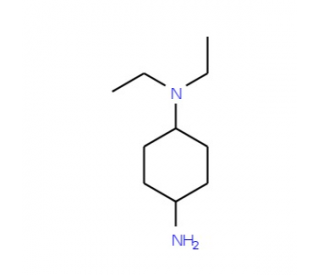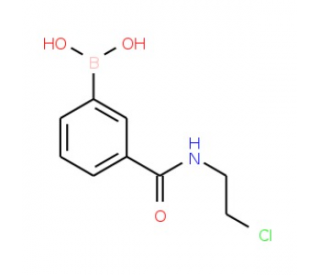详细说明
Species Reactivity
Human
Specificity
Detects human pIgR in direct ELISAs.
Source
Monoclonal Mouse IgG 1 Clone # 825709
Purification
Protein A or G purified from hybridoma culture supernatant
Immunogen
Mouse myeloma cell line NS0-derived recombinant human pIgR
Lys19-Arg638
Accession # P01833Formulation
Lyophilized from a 0.2 μm filtered solution in PBS with Trehalose. *Small pack size (SP) is supplied as a 0.2 µm filtered solution in PBS.
Label
Unconjugated
Applications
Recommended
ConcentrationSample
Blockade of Receptor-ligand Interaction
In a functional ELISA, 0.1-0.6 ug/mL of Mouse anti-HumanpIgR will block 50% of the binding of 150 ng/mL of Human IgM toimmobilized Recombinant Human pIgR (Catalog # ) coated at 2 ug/mL(100 µL/well). At 6 μg/mL, this antibody will block >90% of the binding.
Please Note: Optimal dilutions should be determined by each laboratory for each application. are available in the Technical Information section on our website.
Preparation and Storage
Reconstitution
Reconstitute at 0.5 mg/mL in sterile PBS.
Shipping
The product is shipped at ambient temperature. Upon receipt, store it immediately at the temperature recommended below. *Small pack size (SP) is shipped with polar packs. Upon receipt, store it immediately at -20 to -70 °C
Stability & Storage
Use a manual defrost freezer and avoid repeated freeze-thaw cycles.
12 months from date of receipt, -20 to -70 °C as supplied.
1 month, 2 to 8 °C under sterile conditions after reconstitution.
6 months, -20 to -70 °C under sterile conditions after reconstitution.
Background: pIgR
The human Polymeric Immunoglobulin Receptor (pIgR; also known as Membrane Secretory Component) is a 100 kDa type I transmembrane glycoprotein that is synthesized as a 764 amino acid (aa) precursor. It includes a signal sequence (aa 1 - 18), an extracellular region (aa 19 - 638), a transmembrane segment (aa 639 - 661), and a cytoplasmic domain (aa 662 - 764) (1 - 3). The extracellular region consists of five Ig-like domains and a sixth non-Ig domain that connects to the membrane region. pIgR is expressed on secretory epithelial cells of exocrine tissues. Immunoglobulin isotypes consist of two heavy (H) and two light (L) chains. For IgA and IgM, this H2L2 monomer can form larger polymers through association with a joining chain (J chain). The Fc regions of IgA and IgM have a carboxy-terminal extension called a secretory tailpiece that binds the J chain (4). pIgR functions as a carrier that transports IgA and IgM across epithelium (5). On the basolateral surface of epithelial cells, the receptor initially binds non-covalently to IgA via a docking site on the J chain. This initiates a rearrangement in which a disulfide bond forms between pIgR and an IgA heavy chain (2). The complexes are then internalized and transcytosed to the apical surface. A soluble covalent complex called secretory IgA (SIgA) is now generated by proteolytic cleavage of the sixth extracellular domain of pIgR and released into the lumen (6). This IgA-bound and proteolytically generated pIgR fragment is referred to as secretory component (SC). Notably, human pIgR transcytoses constitutively, with or without ligand, creating both bound and free, 78 kDa SC following cleavage (3). The extracellular region of pIgR is 64%, 65% and 70% aa identical to the equivalent region in rat, mouse and porcine, respectively. The receptor component of the complex anchors the SIgA molecule to mucous (7). SIgA is a crucial component of the mucosal immune system serving to protect the large expanse of mucous membranes that form a barrier between the interior of the body and the external environment (8).
References:
Krajci, P. et al. (1989) Biochem. Biophys. Res. Commun. 158:783.
Piskurich, J. et al. (1995) J. Immunol. 154:1735.
Brandtzaeg, P. and F-E. Johansen (2001) Trends Immunol. 22:545.
Braathen, R. et al. (2002) J. Biol. Chem. 277:42755.
Ben-Hur, H. et al. (2004) Int. J. Mol. Med. 14:35.
Asano, M. et al. (2004) Immunology 112:583.
Phalipon, A. and B. Corthesy (2003) Trends Immunol. 24:55.
Uren, T. et al. (2003) J. Immunol. 170:2531.
Long Name:
Polymeric Immunoglobulin Receptor
Entrez Gene IDs:
5284 (Human); 18703 (Mouse)
Alternate Names:
FLJ22667; hepatocellular carcinoma associated protein TB6; Hepatocellular carcinoma-associated protein TB6; MGC125361; MGC125362; pIgR; Poly-Ig receptor; polymeric immunoglobulin receptor











 粤公网安备44196802000105号
粤公网安备44196802000105号